Pension contribution limits and rules
Learn more about how much you can contribute to your pensions, and how you could take advantage of unused allowance from previous years.

Annual allowance on contributions
The annual allowance is the total amount of money you can pay into your pension(s) and receive tax relief.
The annual allowance includes your contribution, your employer’s contribution and tax relief.
You can pay as much as 100% of your gross earnings, up to a maximum of £60,000, into your pension.
For example, if you wanted to contribute £60,000, you would only pay £48,000. The other 20% (£12,000) is topped up by the government.
If you earn less than £3,600 a year
Anyone with annual earnings below £3,600 can still contribute up to £3,600 to their pension each year (£2,880 of their own money and 20% (£720) topped up by the government).
If you are a high earner
If your annual adjusted income is over £260,000, your annual allowance for pension contributions could be limited. This is known as the Tapered Annual Allowance.
For every £2 over £260,000 you earn, your allowance is reduced by £1. There is a maximum reduction to £10,000 for those earning £360,000 or more.
The taper is also dependent on your threshold income being £200,000 or more. This is your annual income before tax, including any bonuses, dividend income, income from property and so on, but minus any personal and employer pension contributions.
In comparison, your annual adjusted income is your income before tax plus the value of any employer pension contributions.
If your threshold income is below £200,000, the annual allowance taper will not be triggered.
| Annual Adjusted Income | Pension contribution limit |
| Up to £260,000 | £60,000 |
| £285,000 | £47,500 |
| £310,000 | £35,000 |
| £335,000 | £22,500 |
| £360,000+ | £10,000 |
If you start taking pension income
Your annual allowance will be reduced to £10,000 if you start withdrawing a taxable income from a defined contribution pension scheme (this includes SIPPs, private pensions and many workplace pensions). This is known as triggering the Money Purchase Annual Allowance (MPAA).
Your annual allowance will not be reduced if you just take your tax-free lump sum (up to 25% of your pension). You will retain the standard annual allowance of 100% of your gross earnings, subject to a maximum of £60,000 gross per year.
The MPAA does not apply if you draw an income from a salary-based defined benefit pension scheme.
Pension carry-forward rule
In certain circumstances, unused annual allowance from the previous three years can be carried forward to this year. If you qualify for carry forward, you could contribute more than £60,000 to your pension in one year.
To qualify you must have:
- Been a member of a pension scheme in each tax year from which you carry forward.
- Some of your annual allowance left from those years (the limit was £40,000 before 2023/24, and £60,000 from 2023/24)
- Used up all your allowance in the current tax year.
Have earnings of at least the level of the total contribution you are looking to make in the year of payment
Even with carry forward, you cannot contribute more in a year than your total earnings for that year.
For example: Sarah has contributed £30,000 in each of the previous three years to her personal pension scheme. As the annual allowance was £40,000 in these three years, and her earnings were above this in each of those years, she could carry forward an extra £10,000 allowance from each year.
That means including the £60,000 annual allowance for the current tax year along with the £30,000 carry forward, she could invest £90,000 in the current tax year.
If her earnings in the current year were lower than £90,000, she would be limited to a maximum contribution equivalent to her salary.
Pension overpayments
If you pay more into your pension than your available annual allowance (including any unused allowance carried forward), the excess amount won’t benefit from tax relief. In addition, you may face an annual allowance charge from HMRC, which effectively removes the tax relief you received on the excess contribution.
How can I top up my pension?
The two main ways to top up your workplace or personal pension are to increase your regular contributions or pay in a lump sum.
You can do this at any time, but remember if you exceed your annual allowance you may have to pay additional tax.
By topping up your pension you will benefit from compounding – in other words, the earlier you contribute to your pension, the more time it will have to grow.
State pension
You can top up your state pension by paying voluntary national insurance (NI) contributions.
The amount of state pension you receive is determined by the number of years you have paid NI.
You need to have paid NI contributions in for at least 10 years to get any at all.
The government has an online service for checking your state pension if you wish to find out more.
Pension contributions FAQs
Important information: The ii SIPP is for people who want to make their own decisions when investing for retirement. As investment values can go down as well as up, you may end up with a retirement fund that’s worth less than what you invested. Usually, you won’t be able to withdraw your money until age 55 (57 from 2028). Before transferring your pension, check if you’ll be charged any exit fees and make sure you don't lose any valuable benefits such as guaranteed annuity rates, lower protected pension age or matching employer contributions. If you’re unsure about opening a SIPP or transferring your pension(s), please speak to an authorised financial adviser.